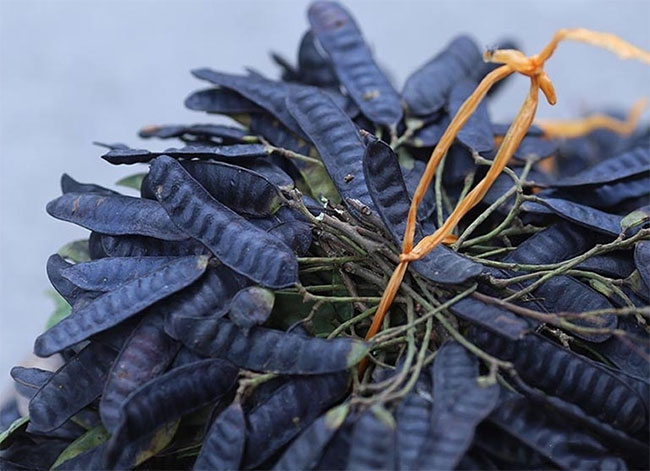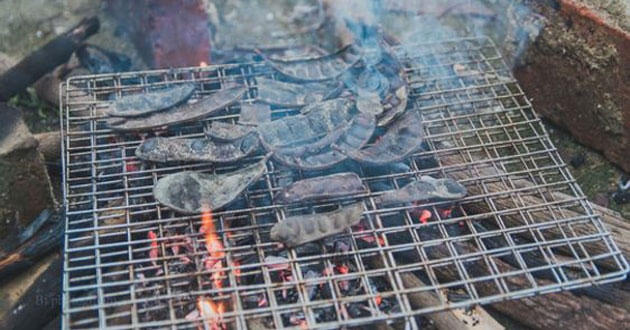According to traditional medicine, burning dried fruit of the soapberry tree (bồ kết) is one of the methods to relieve nasal congestion, purify the air, and help with antibacterial properties, respiratory decline, and difficulty breathing. This method has been passed down and widely applied in folk practices since ancient times.
So, how should we properly burn soapberry to disinfect a house? Let’s explore this in the article below!
Benefits of Burning Soapberry
Traditional medicine records that the soapberry fruit contains many beneficial substances and compounds that can open the nasal passages, reduce phlegm, disinfect, and induce sneezing. It can be used to treat conditions such as stroke, aphasia, indigestion, and asthma-related phlegm.
According to researchers, the method of burning soapberry to produce smoke continuously allows saponins and other compounds to vaporize and blend into the smoke. This smoke is then inhaled, spreading into the respiratory system and adhering to the mucous membranes, enhancing the body’s ability to combat pathogens.

The natural fragrance of soapberry after being burned will clear the nasal passages, making breathing easier.
Saponin is a natural glycoside found in many plant species. It has numerous health benefits, including enhancing the immune system. For example, ginseng is a rare medicinal herb rich in saponins.
The natural fragrance of soapberry after being burned helps clear the nasal passages and makes breathing easier. The flavonoid compounds in soapberry work to protect capillary walls, maintaining their integrity and reducing the risk of bleeding.
Additionally, this aroma helps homeowners repel flies, mosquitoes, cockroaches, ants, and other flying insects from the house.
In summary, burning soapberry in the home to relieve nasal congestion, combat the flu, or purify the air is a folk remedy that has health benefits and has been passed down through generations.
How is Burning Soapberry Used to Disinfect During the Covid-19 Pandemic?
Currently, many people are sharing that the method of burning soapberry can eliminate the Corona virus. However, professors, doctors, and researchers in traditional medicine conclude that there is no scientific evidence supporting this method’s effectiveness against the Covid-19 virus.
According to traditional medicine, materials with antibacterial properties, air-purifying, and disinfecting qualities such as soapberry, pomelo peel, eucalyptus oil, or lemongrass are merely folk remedies and are not effective against dangerous viruses, particularly complex strains like Corona. These viruses require specific vaccines developed through research and separation of the virus strain.

Burning soapberry is an effective method for purifying the air and disinfecting…
Preventing the spread of the Corona virus must adhere to the comprehensive guidelines recommended by the Ministry of Health. In the fight against respiratory diseases caused by the Corona virus, enhancing the immune system for families and individuals is crucial. While burning soapberry does not kill this virus, it remains a good method for air purification and disinfection, boosting resistance and immunity.
Burning soapberry in the house is a good measure to improve living conditions; however, we need to understand the proper uses of burning soapberry to avoid misuse and complacency in disease prevention.
Currently, some schools are also applying the method of burning soapberry in classrooms; combined with disinfecting solutions throughout the school, on buses, and in dining areas; adding hand sanitizers in many areas; and increasing communication with parents and students to understand and follow the Ministry of Health’s recommendations to ensure a safer learning environment for children.
Cases Where Burning Soapberry Should Be Avoided
This method of burning soapberry is not suitable for everyone; there are specific cases where burning soapberry at home should be avoided.
According to traditional medicine, individuals showing signs of coughing up blood, vomiting blood, or those with digestive diseases, stomach issues, or weak spleen and stomach should not use soapberry.
Research indicates that soapberry contains cleaning agents with mild acidity that can stimulate the cervix, potentially leading to premature birth, miscarriage, and affecting the fetus (increasing the risk of deformities). Therefore, pregnant women should not use or inhale the scent of soapberry.
Individuals with a history of asthma, those who are weak, allergic to soapberry essential oil, or those who are hungry should also avoid burning it.
When burning soapberry, attention should be paid to the maximum dosage to prevent excessive use; only a small amount should be used each time.
For healthy adults, 3 to 4 fruits are sufficient, while for children, only 1 to 2 fruits should be used at a time, and it is advisable not to burn too many times in one day. For infants, it is best to consult a doctor before use.
How to Properly Burn Soapberry for Disinfection
First, prepare 3 to 5 dried soapberry fruits, depending on whether the users are adults or children and the room size to balance the amount of soapberry used.
Then, place the soapberry in a small bowl or on a charcoal pot and ignite it to produce smoke.
Note:
- Be cautious when using charcoal or paper to burn soapberry; do not neglect safety during the burning process to prevent unexpected incidents.
- The burning bowl should be placed in a corner of the room or a safe position, out of reach of children to prevent burns.
- Only burn a moderate amount of soapberry; do not use too much at once to avoid smoke suffocation.
- Burn only when an adult is present; do not allow children to do this alone at home.
- After burning, ensure to check the source of the fire and extinguish it immediately if it is still burning.
Guide to inhaling steam for nasal and throat treatment at home
Rare disease causes a girl in Slovakia to have skin as thick as a turtle’s shell
Discovery predicts the future: Earth… falling into another galaxy?

















































